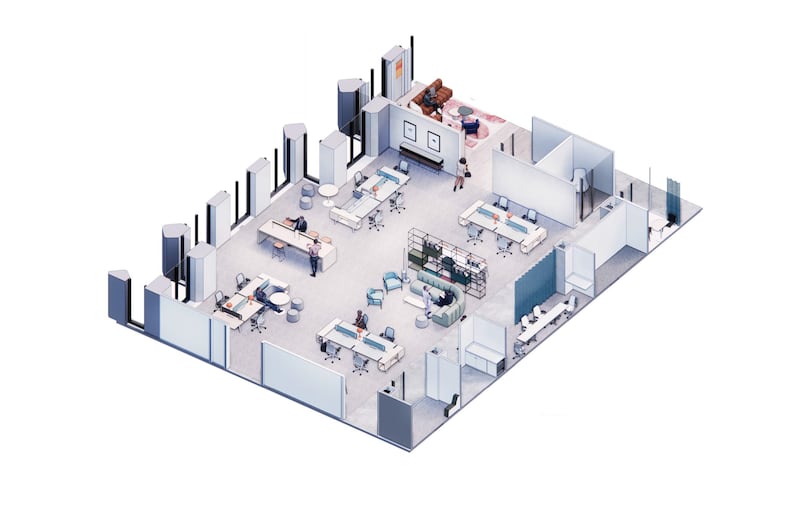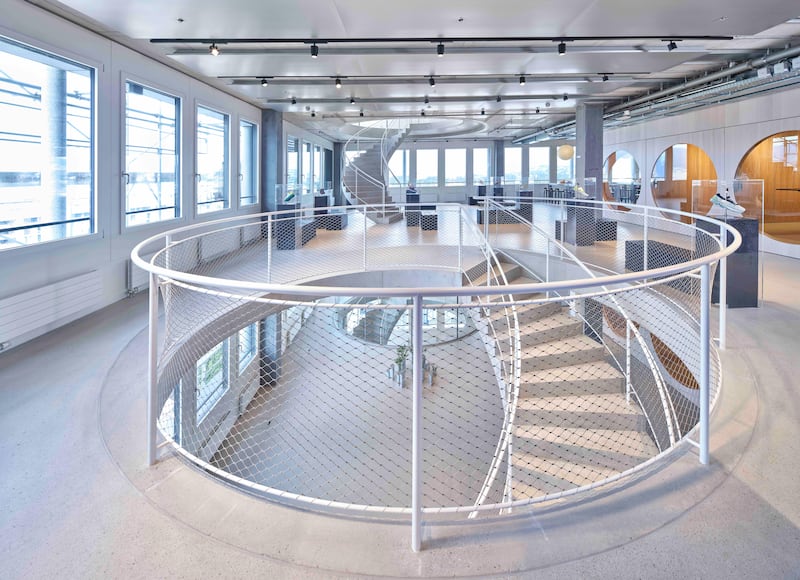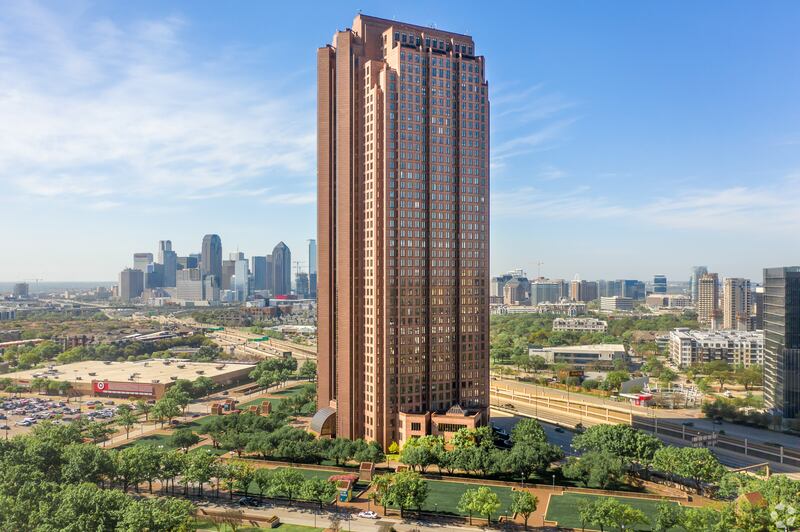
The Business of Fashion
Agenda-setting intelligence, analysis and advice for the global fashion community.

Agenda-setting intelligence, analysis and advice for the global fashion community.

A few years ago, Neiman Marcus pumped hundreds of millions of dollars into renovating its stores, to make the experience more appealing to customers who had grown used to shopping from home.
Now, the company is taking the same approach with its corporate offices.
Neiman Marcus’ new headquarters, scheduled to open early next year in a Dallas skyscraper, represents a roughly $100 million bet that in the post-pandemic world, you can’t just expect people to show up, you have to give them a reason.
The new space won’t have private offices, or assigned workspaces of any kind, in order to free up more space for conference rooms, sofas and other sitting areas meant to accommodate groups of people. The department store operator is dedicating roughly 70 percent of its 85,000 sq. feet of floor space to such collaborative areas, compared to 30 percent for individual workstations. Those ratios were reversed at the company’s old offices, a set of suites just above its Dallas flagship store, which it still owns.
ADVERTISEMENT
The new office is built to reflect a landscape where many corporate jobs can be performed from anywhere. Rather than places people are required to show up in order to do (and keep) their jobs, employers like Neiman Marcus increasingly see the office as a space to exchange ideas and share in unique experiences that can’t be replicated elsewhere.
The company is going further than many fashion businesses toward a hybrid work model, where employees can coordinate with their peers to meet in person as needed, rather than on a set schedule.
“Bringing people together in one single physical space requires a whole lot of coordination of people’s schedules and life,” said Eric Severson, Neiman Marcus Group’s chief people and belonging officer. “So you should only do that when that’s the very best way to build something together or to have an experience together.”
Not every company is so flexible. After two years of crafting remote work policies on the fly, employers and professional employees everywhere are negotiating what permanent working arrangements will look like. Apple this week told employees near its Cupertino, California headquarters to report to the office three days a week starting in September. Nike and Adidas have had many of their corporate staffers coming in at least a couple days a week for months.
More than ever, the office is a powerful recruiting and retention tool. Everything from its design and layout to a company’s requirements for the days and times people need to come in set the tone for whether employees see their organisation as a desirable place to work. Even companies with the strictest in-office attendance policies must take note, whether that means more meeting spaces or investing in ergonomic sofas and chairs or other perks that can rival the comfort of a home office.
“The biggest thing you can do wrong is to go back to what you were doing pre-pandemic,” said Craig Rowley, a senior client partner at hiring consultancy Korn Ferry. “You need this kind of iterative process for your people to get them back to the office.”
Real Estate
Even before the pandemic made remote work the norm, Neiman Marcus had already decided to move toward a hybrid model, where its corporate teams would only use offices as needed. That gave the company a head start in planning its new hub, which incorporated research “that cuts across sociology, social anthropology, industrial engineering,” Severson said.
ADVERTISEMENT
The biggest learning was that offices were most useful for collaboration and that employees’ other needs — privacy and moments of rest and rejuvenation, for instance — could be better accomplished elsewhere. It also learned — from its meetings with global architectural firm Gensler and “human-centred” design company IDEO plus the furniture companies it employed — that the most attractive modern offices operate much like homes.
“It’s a combination of developing an open concept but that also lets people opt into wherever they want to fit in on a given day throughout the day,” Severson said. “So they will move around just like they would at home; they stand up, sit at their desk, they go from the kitchen to the bathroom and to the sofa.”
To accomplish this, the company will bring in “ancillary furniture,” or informal office equipment and fixtures meant to support a range of postures such as sitting, perching and lounging. It also sprung for a space with “tons of amenities” like a conference centre and an entertainment space on the building’s 42nd floor, where it can host “fashion shows and recognition events,” Severson said.

When it comes to office design, fashion creatives need spaces that inspire them to envision their most innovative ideas — but the decor elements have to make sense and be on-brand, said Melissa Gonzalez, principal at architecture firm MG2 and founder of The Lionesque Group.
“It’s about establishing that multi-sensory environment where the interiors exude the personality of the brand and boost energy and wellbeing,” she said.
On, the running shoe brand based in Zurich, Switzerland, opened its new 17-floor office space earlier this year outfitted with a central stairway, called “The Trail,” designed to replicate the hike the brand’s three founders took across the Engadine Valley in Switzerland in 2009 when they first set out to build the company.

Employees are encouraged to use the stairway where possible as a source of motivation and a reminder of the journey the company took to scale. They are also organised into “villages,” similar to the ones the founders encountered when climbing the mountain, rather than discrete departments, to encourage collaboration.
Nike’s New York headquarters features a swimming pool, multiple gyms, a basketball court and food cafes with free meals and beverages, including coffees crafted by an on-site barista. Adidas’ newly-expanded Portland, Ore. headquarters has a fitness centre, rooftop lounge, cafeteria, juice bar and a “green roof” covered in vegetation.
ADVERTISEMENT
For brands that want to inspire without breaking the bank, simple additions like green plants could add a “naturally therapeutic” feel to an office, Gonzalez said. Rearranging existing furniture to make a space more inviting and collaborative is another cost-effective solution, said Rowley.
“The immediate thing is to rethink how you’re laid out,” he said. “For example, if you’ve got four cubicles that are going to be empty, can you turn them around and buy a couple bean bags chairs and make a space where people can collaborate?”
People Matters
It’s true that many corporate workers have grown to appreciate remote work. But more than the ability to answer emails in their pyjamas, what they’re most after is the flexibility to use the office — and their working hours — in a way that makes sense for them, said Gonzalez.
One of the things corporate workers appreciate most about working from home is that they no longer have to deal with the lost time and stress of a two-way commute. But, in the two years since the pandemic started, many workers have been conditioned to fill what used to be their commute time with additional work, Rowley said.

Companies compelling a mostly-remote corporate workforce to come back to an office (even just a couple days a week) should be mindful of the new trade-offs they’re creating and adjust people’s responsibilities and deliverables in a way that’s beneficial and rewarding on both sides, experts say.
For instance, on the days an employee is coming in, their responsibilities might need to shift from hard deliverables like preparing a powerpoint presentation or spreadsheet to a softer task like being present for a one-on-one meeting with a manager.
While they’re not new offerings, perks like (good) coffee and a free meal every now and then plus face-time with team members — especially senior leaders — still go a long way, experts say.
“You can order bagels once a week or do a midweek coffee as a perk to the team,” Gonzalez said. “We’ve discussed bringing in a masseuse to give people massages every quarter — it depends on how far you want to take it.”
More important than what’s in the office is who is there. At the top of the list are managers, directors and senior executives who should set the tone and make themselves available to mentor younger talent as well as other team members who have missed out on important workplace rituals due to the pandemic, Rowley said.
“If you’re going to make people come into the office to use it together, there has to be a reason,” Severson said. “When they leave, they need to feel like ‘wow, I just did something I could only do here with other people in this physical space.’”
 Opens in new window
Opens in new windowBlack Americans have long been avid buyers of high-end goods. Now their expectations are shifting, with important implications for brands.
Top executives believe in-person work is necessary for culture building, employee loyalty and creativity — but they’ll need to sell that idea to their workers.
It’s still an employee’s labour market, but recession fears are adding new challenges to pay negotiations for retail and fashion job candidates looking to increase their salaries.
A tight labour market, the pandemic and renewed emphasis on racial equity and climate change have recast the industry’s desirable jobs and companies.

Sheena Butler-Young is Senior Correspondent at The Business of Fashion. She is based in New York and covers workplace, talent and issues surrounding diversity and inclusion.
BoF Careers provides essential sector insights for fashion designers this month, to help you decode fashion’s creative and commercial landscape.
This week, talent expert Suki Sandhu OBE and advisor and executive search consultant Karen Harvey shared insights on the core skill sets expected of leaders and managers in the fashion industry today. BoF Careers shares key learnings from the event.
Discover the most exciting career opportunities now available on BoF Careers — including jobs from Ermenegildo Zegna Group, JW Anderson and A-Cold-Wall.
BoF spoke to HR executives and talent experts at Alexander McQueen, On and Deckers Brands — global employers currently recruiting on BoF Careers — to understand what skills are most relevant to the fashion industry and how to upskill in them in the workplace.